Aladino Debert is working at Digital Domain for over 13 years. His filmography contains projects like Black Sails, A Series of Unfortunate Events, Lost in Space and Ms. Marvel.
How did you and Digital Domain get involved on this show?
The studio initially bid on the project in November 2019, and I was brought in a couple of months later to lead the team. Having expressed my interest in the show beforehand, I threw my hat in the ring when I heard we were being considered. It turned out that I was a good fit given my prior work, and I was available, so I seized the opportunity with enthusiasm.
How was the collaboration with the showrunner and the production-side VFX Supervisor?
As is often the case when serving as a VFX Supervisor on the vendor side for a show, my daily communication and collaboration were with the VFX Producer and Supervisor (Tim Cunningham and Todd Shifflett, respectively) rather than the showrunner. However, we immediately hit it off. Both Tim and Todd were highly experienced and collaborative, making for a great partnership.
What were their expectations and approach about the visual effects?
As we were brought in for the show’s second season, a specific look and feel had already been established. However, we viewed that as the baseline rather than the goal. Our aim, as well as theirs, was to exceed expectations and create things they hadn’t done before. We took on the challenge of creating full digital worlds to plan our sequences, as well as photo-realistic creatures and digi-doubles. We embraced the opportunity with open minds, knowing it would be both exciting and challenging work.
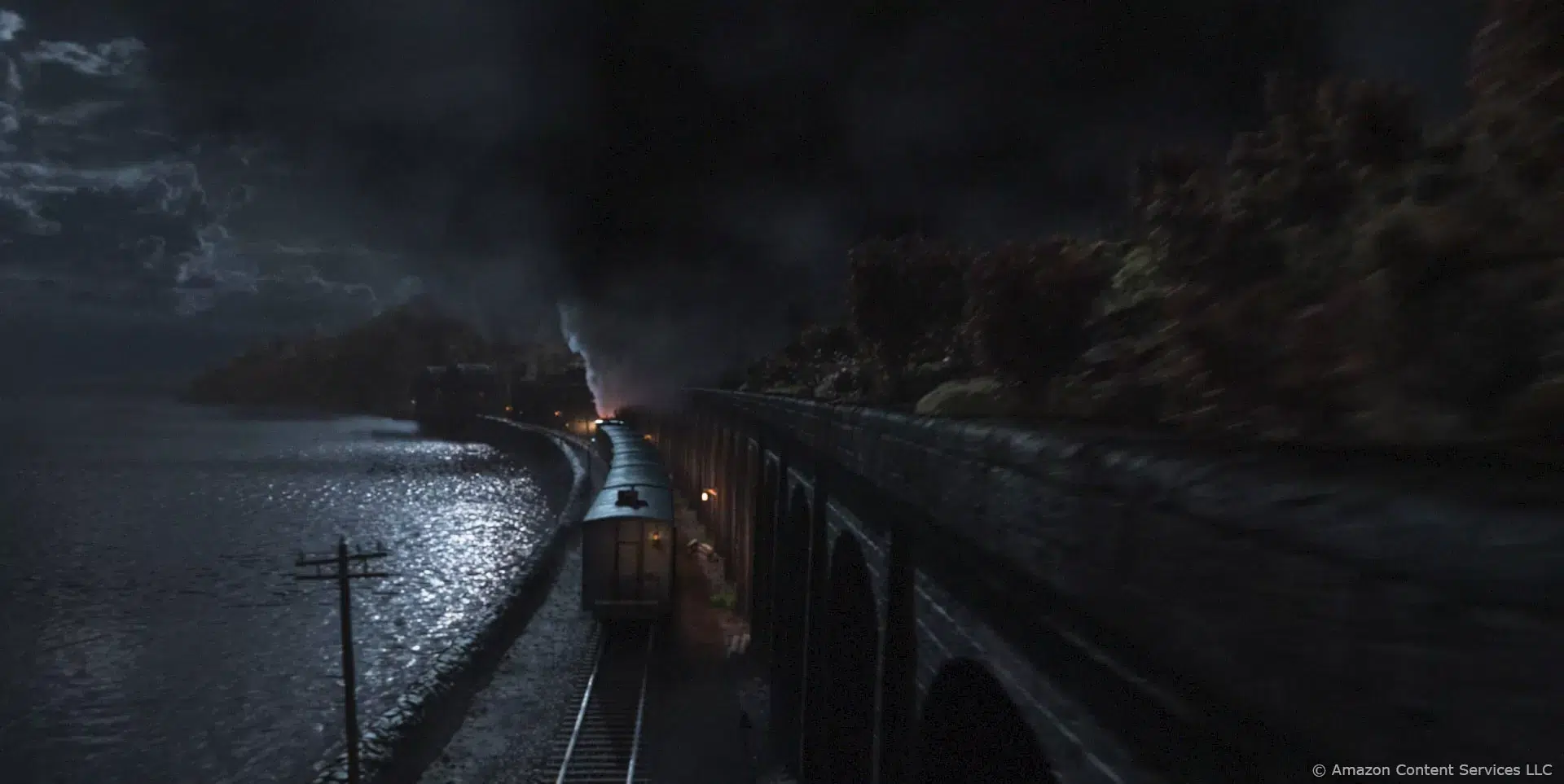
How did you organize the work with your VFX Producer?
Our producer for the show was Jenny Foster, and it was our first time working together. Right from day one, I could tell that we would make a great team. Jenny is not only highly experienced and organized, as all good producers must be, but she also possesses a keen creative eye and is unafraid to use it. Because of my background in directing and supervising short-form content and having had to self-produce to some extent, we quickly established a great symbiotic relationship. Jenny is extremely detail-oriented and runs a tight ship, which allowed me to focus on overseeing the bigger picture.
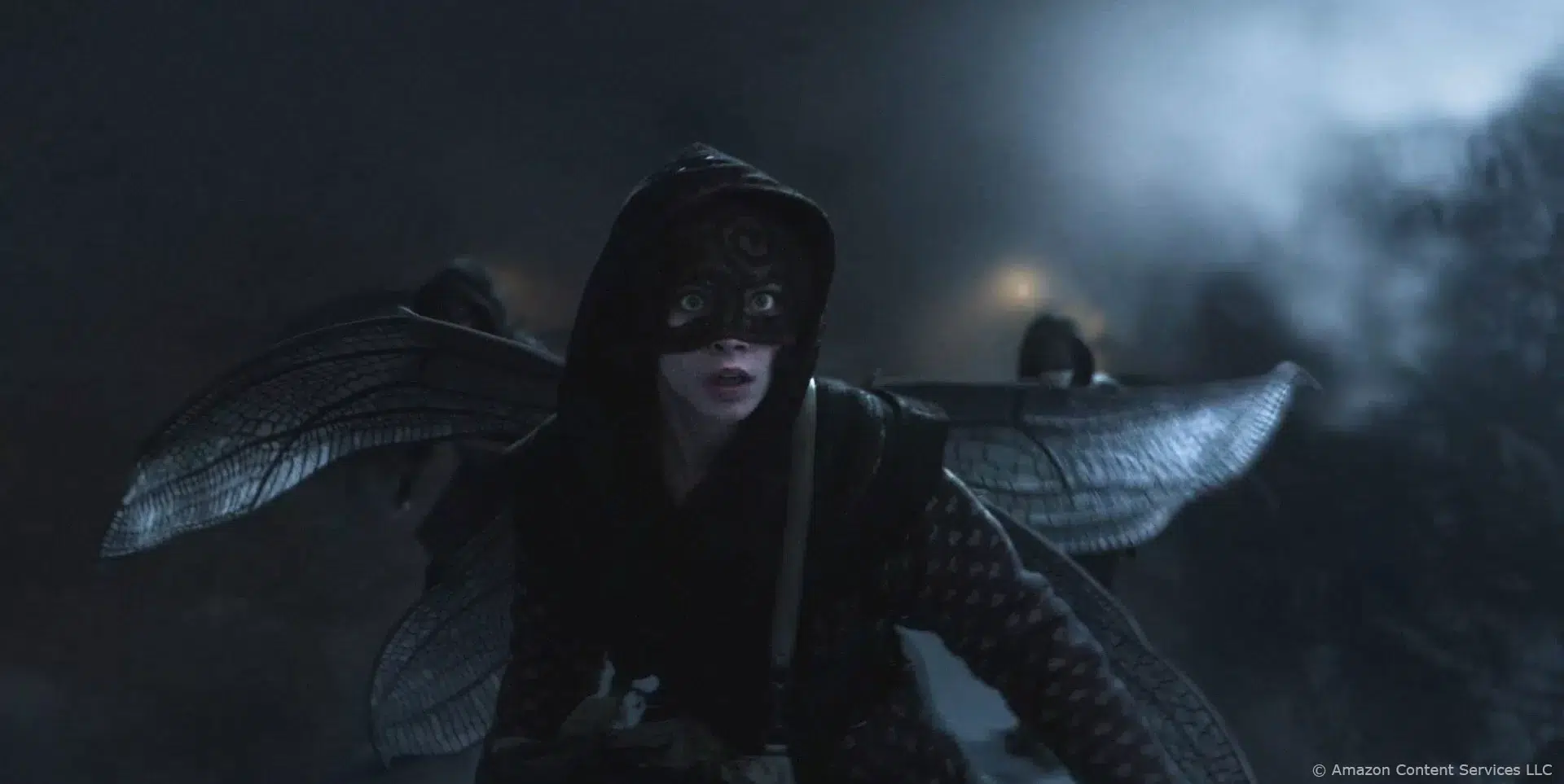
What are the sequences made by Digital Domain?
Our task was to create several sequences for multiple episodes, with the Train Heist in Episode 1, the Carriage Chase in Episode 4, and the Sparas kill spree in Episode 5 being the three most significant ones. Even though our work was spread across five episodes, these three sequences alone amounted to approximately 130 shots in total.
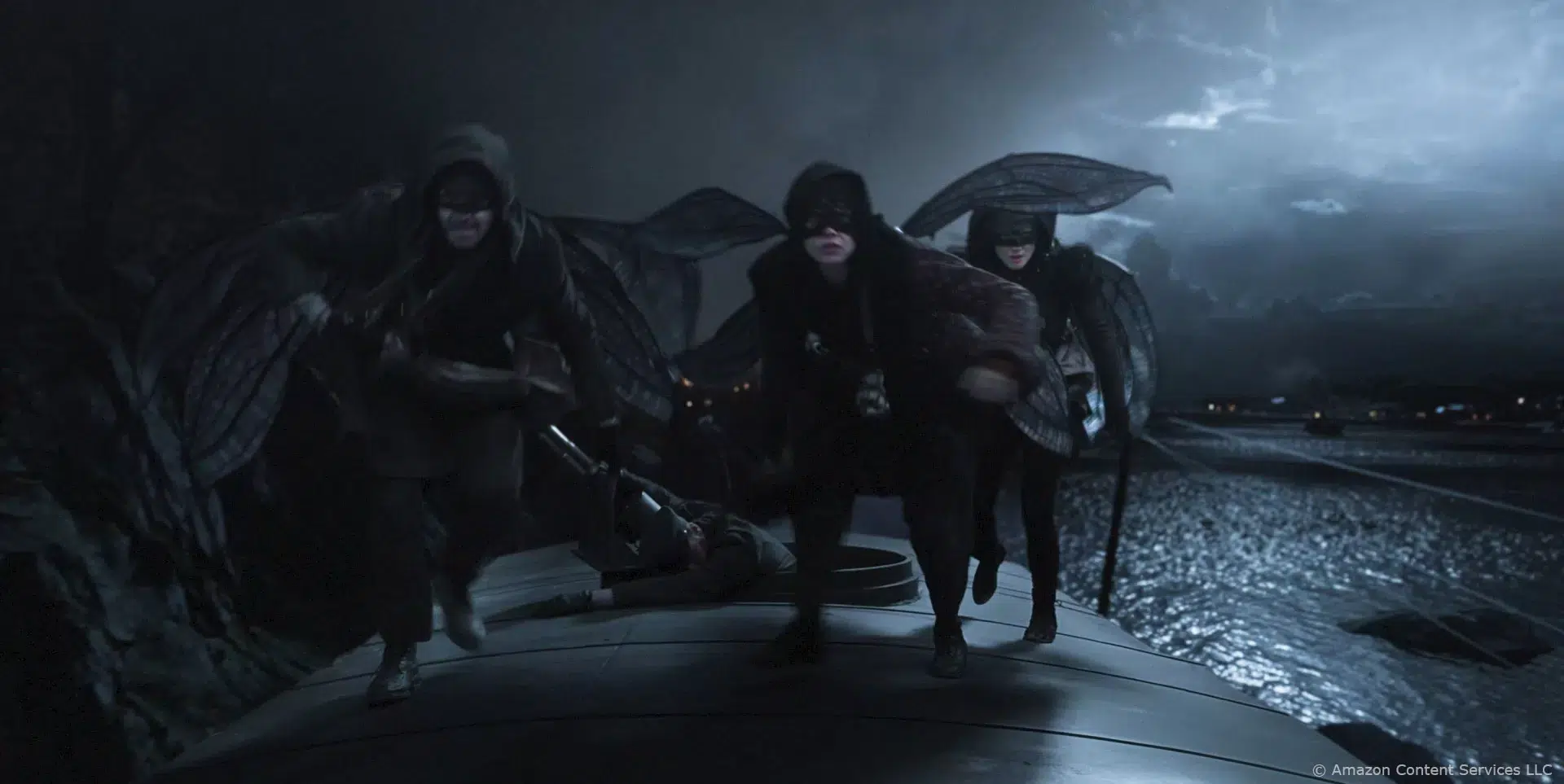
How did you help Cara Delevingne to fly?
Why, we gave her wings, of course!
Can you elaborate about the creation of the wings?
The wings proved to be surprisingly difficult to create, causing our CG Supervisor, Greg Teegarden, and the team to think outside the box. It wasn’t the wings themselves, which had already been established in Season 1 and looked like long, leathery membranes when not in use, but rather their appearance when flapping at an incredibly high speed, like a hummingbird. Anyone who has worked in CGI knows that achieving and art-directing accurate motion blur at high speeds can be a challenge. We needed the blur to have a figure 8 shape, which required a fair amount of R&D to find ways to achieve the desired look, utilizing sub-frame rendering and animation. This was one of those cases where a huge amount of work went into creating something that most people barely notice.
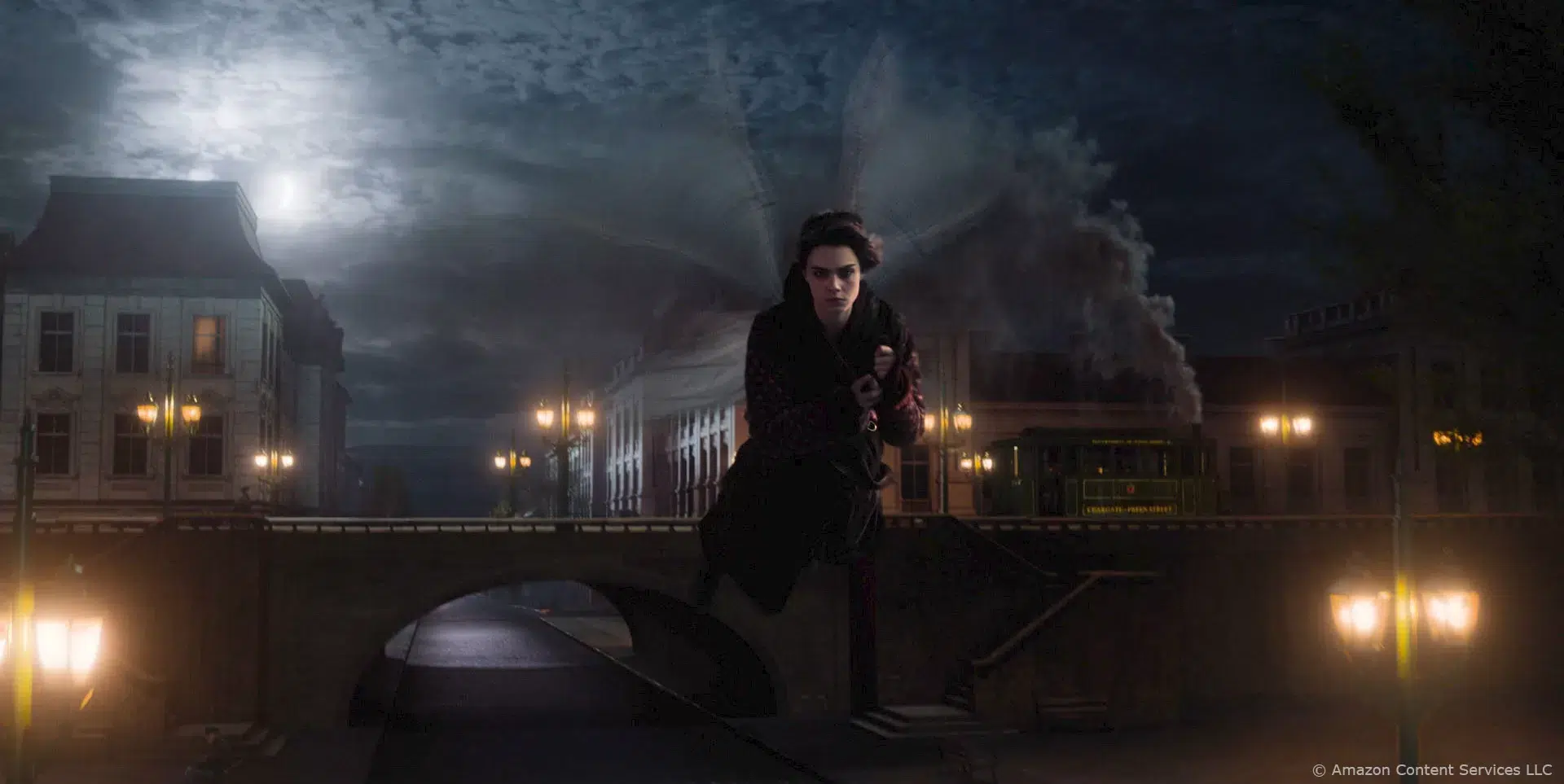
How did you avoid the look of a performer being suspended from wires for the flight sequences?
We were given the task of adding wings to stunt performers as well as creating full digital doubles of the Fae. We couldn’t alter the plates much obviously, but we discussed with Todd (the VFX Supervisor) early on how to avoid the « person on a wire look » in our animation. Our Animation Supervisor, Arda Uysal, Animation Lead, Marco La Torre, and I worked together to tackle this challenge. Wire stunts are always difficult to handle because the harnesses’ rotational pivots are at their waists and not at the shoulders, where the wings would be in this case, so there’s an unnatural feel to most shots. However, with animation, we wanted to ensure that the bodies felt physically correct concerning their flying. In other words, they should always have their pivots at the wing base but also have inertia and momentum in their limbs, clothes, etc. It was a tricky balance because we knew we could create accurate digital Fae, but we had to make sure they didn’t look too different from the plate photography.
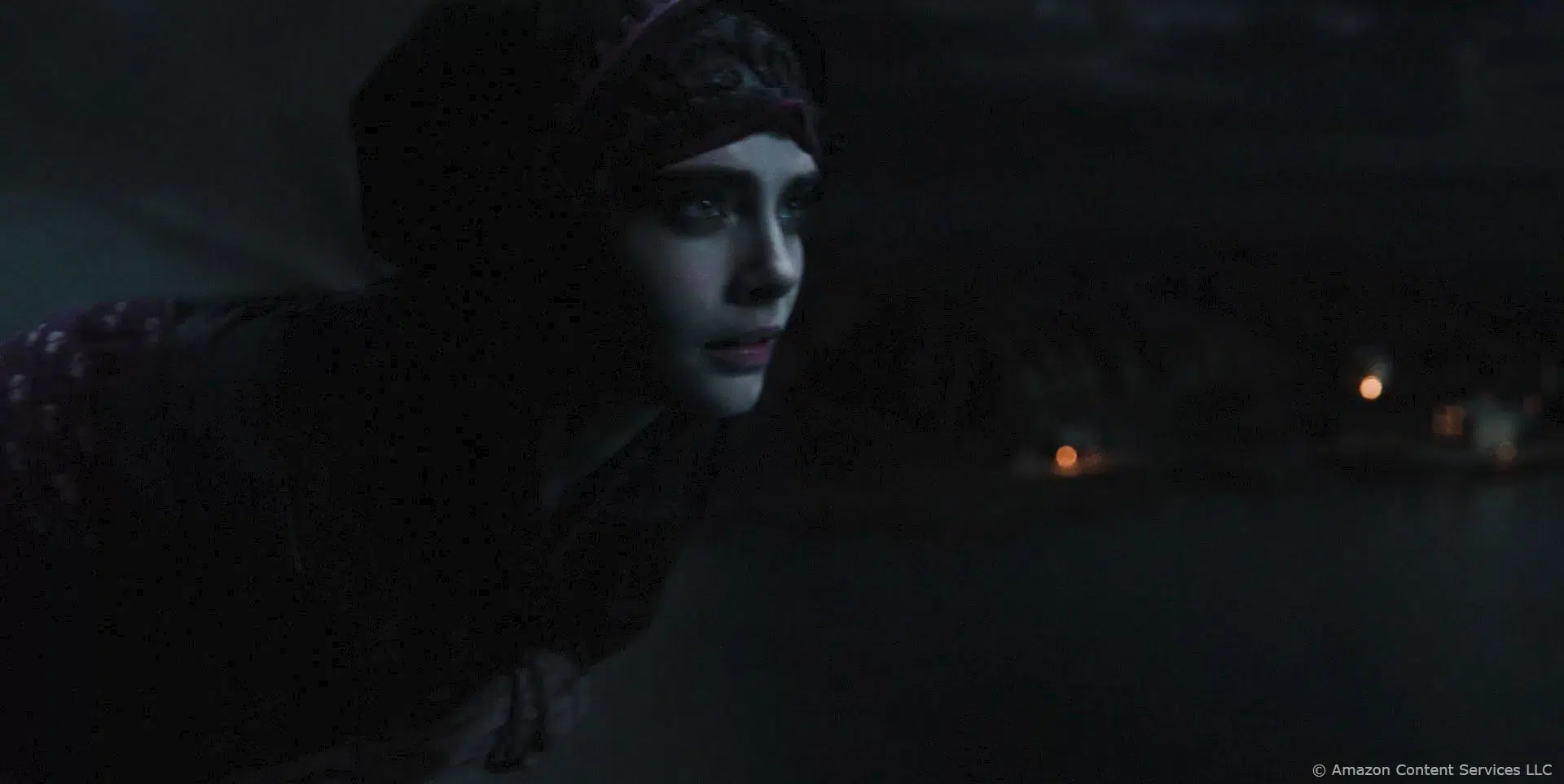
Can you explain in detail about the city creation during the train sequence?
It was not just the creation of a city but a whole world that we were tasked with, encompassing several miles of terrain for the sequence. This provided an exciting opportunity as we had no strict references to follow. Our Environments Lead, Chris Watkins, together with Alberto Casu, spearheaded the initial strategy, analyzing satellite images of the areas surrounding Prague where the show was filmed and using it as a foundation for developing the area. We then added visually compelling elements from a cinematic perspective that aligned with the magic-infused Victorian-influenced setting of the show.
After developing a basic design for the entire area, we scouted around to determine the best places to virtually shoot our shots. It was an engaging process, and the showrunner was pleased with it as well. He mentioned multiple times how great and liberating it was since he knew that, to a certain extent, he could alter the location of specific moments without having to start from scratch.
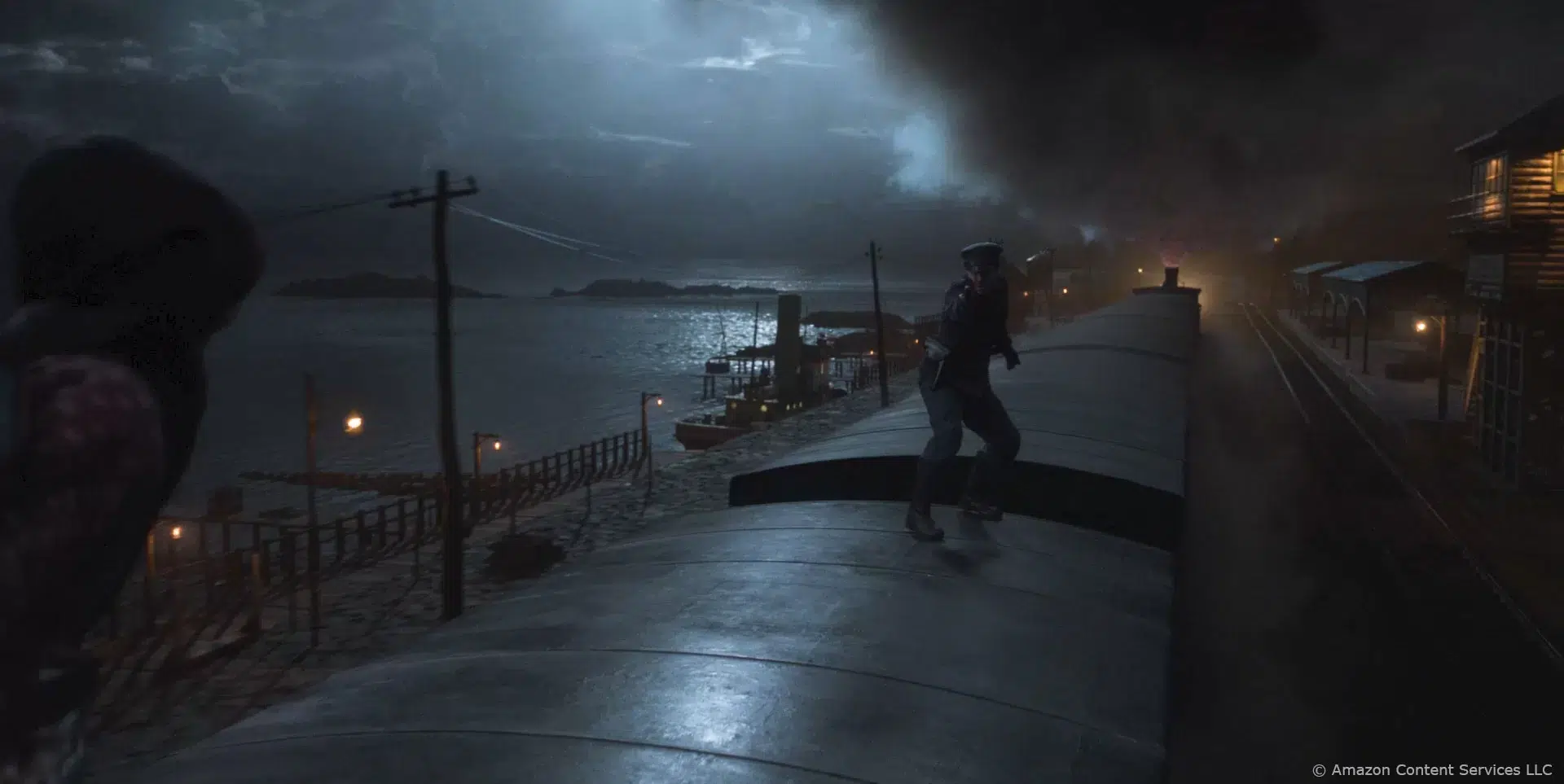
Did you use procedural tools for the city?
There were very few procedural elements in the world we created, given its bespoke nature. While some vegetation, rocks, and other elements were generated procedurally, the majority of the world was crafted through modeling and texturing in the traditional way.
What was the most complicated location to create?
Although the Train Heist location was vast, the city locations for the Carriage Chase were even more challenging because the shots were filmed on location in Prague. While we replaced most of the backgrounds, we also had to extend or replace individual buildings right next to existing ones. This kind of work can be tricky because it must be seamless enough not to attract attention. Additionally, these shots had almost no process screen because a running carriage was filmed through the streets. Therefore, the roto/paint team had a challenging task, for many months.
Despite the challenges, conceptualizing these shots could also be fascinating. For example, the sequence ends with Vignette flying over a steam tramway bridge, looking for the carriage. Except for her plate element, the entire scene was full CG, and we had free rein on how that would look.
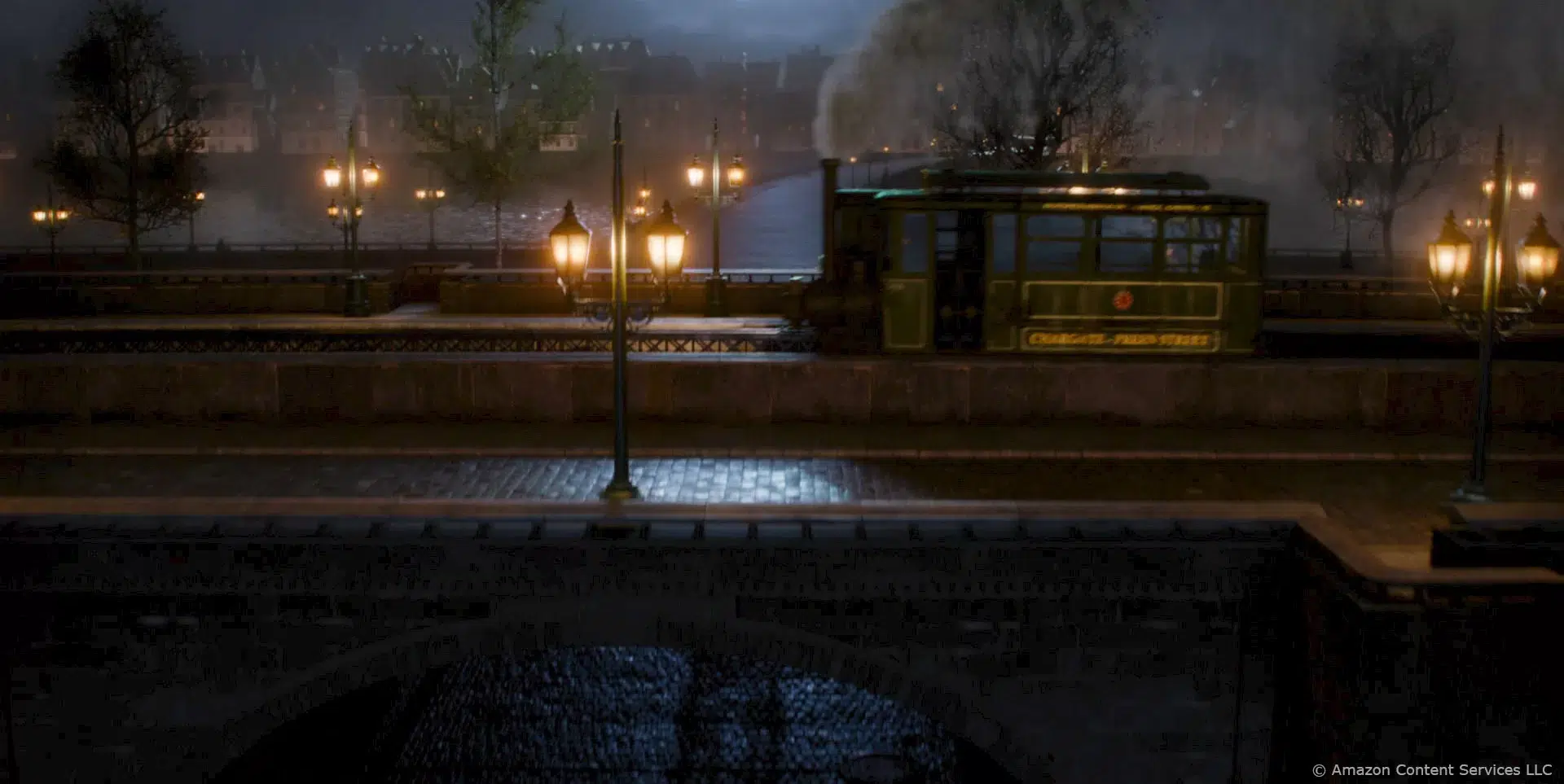
Let’s talk about the terrifying creature, Sparas. How did you design him?
We had a blast working on Sparas, and I personally pushed for the opportunity to work on those shots. The production team had started the design process and provided us with a couple of concept frames. However, we had to develop everything else from scratch, including his full anatomy, the way he killed with his forearm blades, which we added, and how he devoured his victims. There was no guidance on his movement or facial expressions, including the impressive flaps that revealed his skeletal face. We used the initial style frames as a starting point and I collaborated with one of our designers, Chris Nichols, to generate concepts and ideas to present to the clients. Chris produced detailed turntables and renderings, and since he is skilled in both 2D and 3D, we ended up with sculpted models that we could use in our other departments.
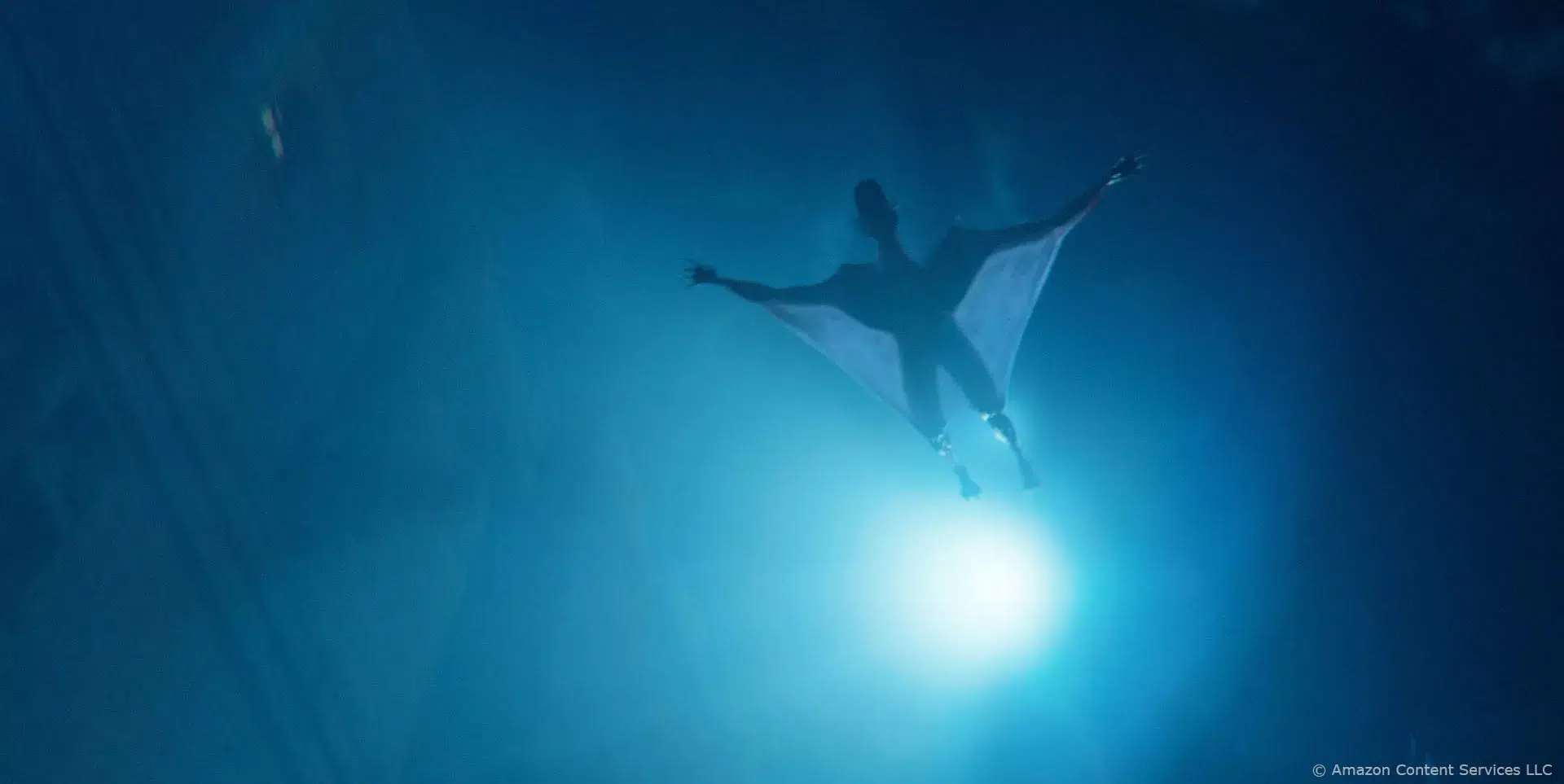
Can you elaborate about his creation?
As mentioned earlier, we only had two renderings from the Art Department, so we were tasked with creating a truly terrifying character from scratch, and it was a full-scale design for a character type that our studio wasn’t typically known for. Even before we were awarded those shots, I decided to create animation tests to help the showrunner visualize what this creature could do and to help us win the work.
Our Animation Supervisor, Arda Uysal, and I worked closely to create those tests, and we went all in! It was a fluid process that we then used as our way of working on the actual shots. Sparas is a humanoid with very long arms, and his entire chest cavity opens up to kill. Oh, and plus, he can fly! This gave us a lot to work with. Moreover, since he’s, well, naked, we knew we’d need a robust muscle system with skin sliding over it to make it believable, especially on the close-ups.
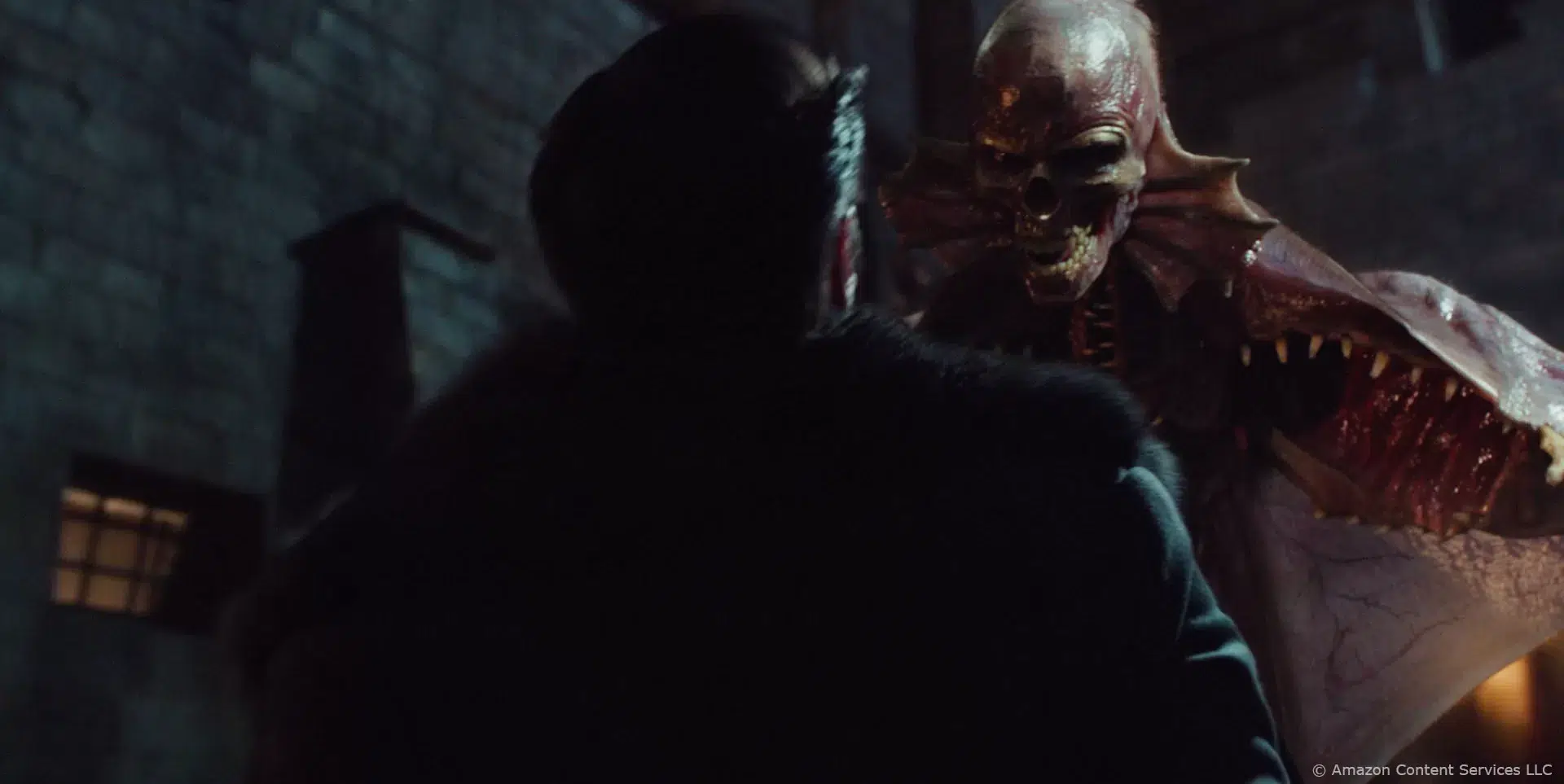
What kind of references and influences did you receive for his animation?
We didn’t have much in the way of references to work with, which is why we began with animation tests even before the sequence was assigned to us. We drew inspiration from great apes and how their long arms are utilized, as well as from Flying Fox bats. However, this only served as a starting point. We had to take into account the stunt actors’ performances as well, as how they were being flung and tossed around, and our animation of the creature had to be seen as triggering those motions. So we used a combination of techniques.
How did you handle his face animations?
The design of Sparas’ face flaps was actually quite challenging. Initially, they were meant to remain open all the time, but since Sparas is a changeling creature who appears human for most of the show, we needed to find a way to close the flaps around his skull. Doing so would make him more convincing as a human under certain conditions. Furthermore, making a skull show expressions is not easy, as anyone who’s seen or tried to animate one can attest, so these flaps gave us an additional tool to convey emotion. When closed, Sparas bore a striking resemblance to the actor playing his human form. This was made possible by the hard work of our Modeling Lead, Tristan Connors, and his team, as well as our Rigging Supervisor, David Lantos. The result was both terrifying and fascinating, and we were thrilled with the outcome.
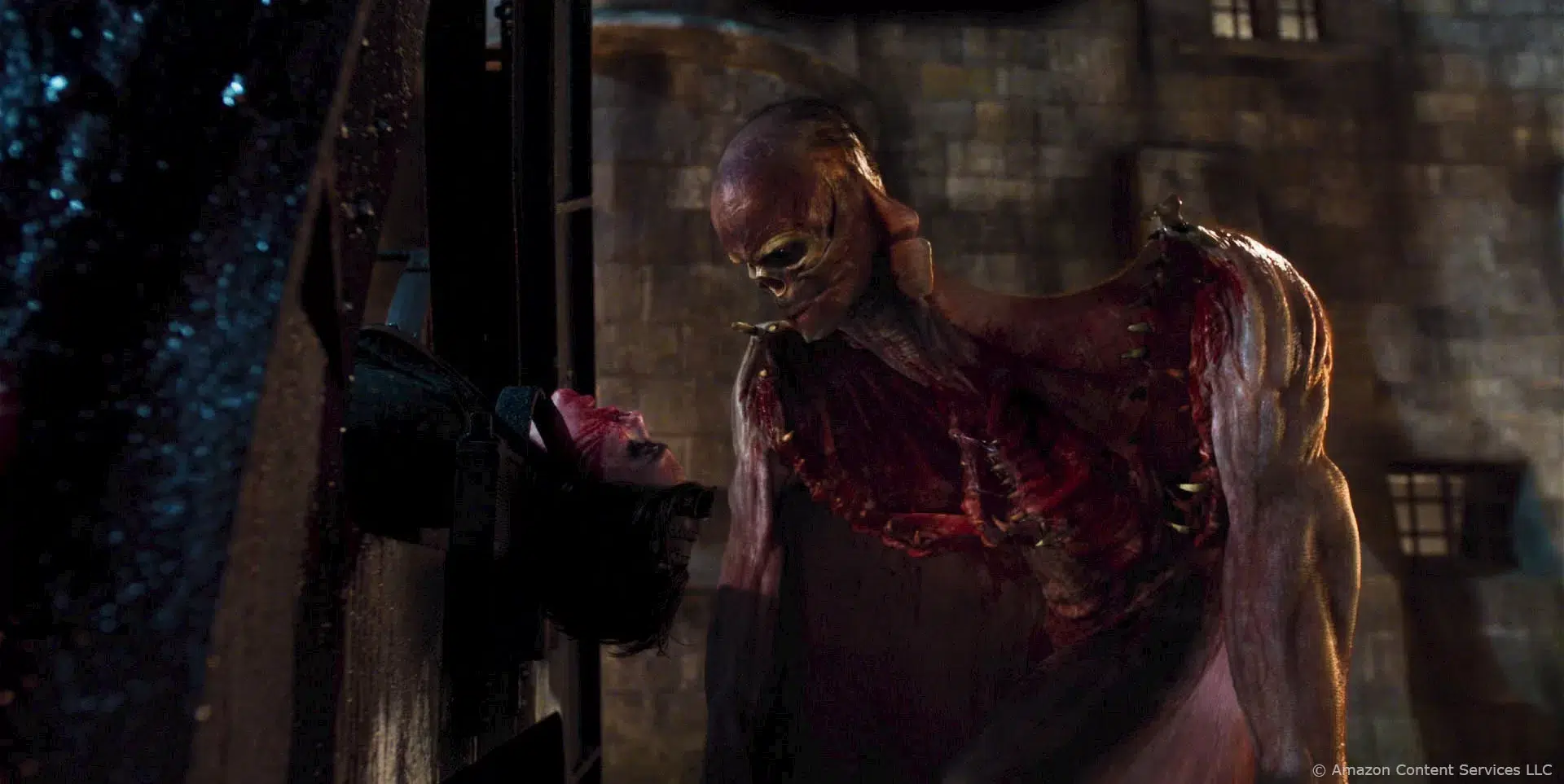
Can you tell us more about his skin and shaders?
The tools we used were relatively straightforward, but creating Sparas required a lot of highly detailed and time-consuming work. We knew that every little detail of his skin, veins, wrinkles, and even areas where it looked like someone had ripped his hair off his scalp would be visible. Additionally, in some shots, we needed to be extremely close to him, which called for peach-fuzz hair throughout his body. To achieve this level of detail, we used numerous photographic references, including some that I wished I had never seen, such as corpses and open wounds. However, the one saving grace from a purely technical standpoint was that we only needed to use Sparas in a night sequence, so we could tailor his appearance specifically for those lighting conditions.
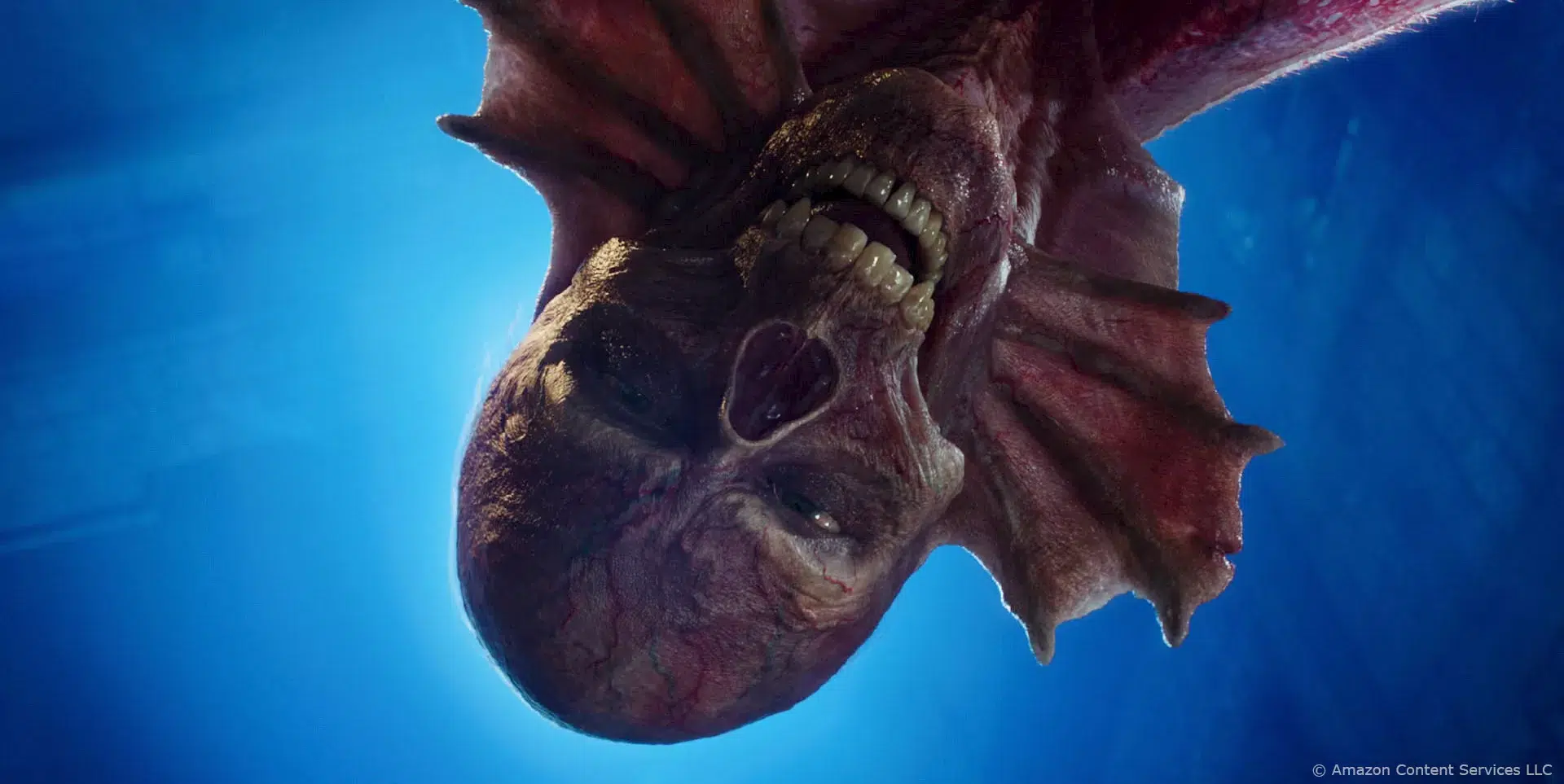
What were the main challenges with him?
I believe that when it comes to creating fantastical creatures, the main challenge is striking a balance between making something that we all know isn’t real, look real. In the case of Sparas, we had the advantage, or disadvantage depending on who you ask, of him being partly human, which gave us a basis for our animation and look. Nevertheless, he proved to be a challenging character to get right. For example, we had a shot that starts at his feet and we orbit around him as he is shredding the poor Chancellor to bits. It was an incredibly long shot, and we were mere inches away from him. So, successfully achieving frightening behavior and a believable appearance for Sparas proved to be quite tricky.
Which shot or sequence was the most challenging?
Definitely the Sparas killing spree, for all the reasons I described above!
Is there anything specific that keeps you up at night?
Ha, well, I suffer from what I usually call The Artist’s Curse, which can be defined as “I’m never, ever, fully happy with the work I do”. I can understand how being in a creative field can make one feel vulnerable to scrutiny. The investment that we put into our work makes it personal, and we want to ensure that our clients are satisfied. Personally, I find that creating lists helps me keep track of our work, and crossing items off those lists gives me a sense of calmness about the process. Additionally, I exercise regularly to clear my head and stay grounded.
However, I must say that over time, I have learned to worry less about work-related stress. When I was younger, I used to get much more stressed out, but I have come to realize how fortunate I am to be doing what I do, and that realization has brought me a sense of peace.
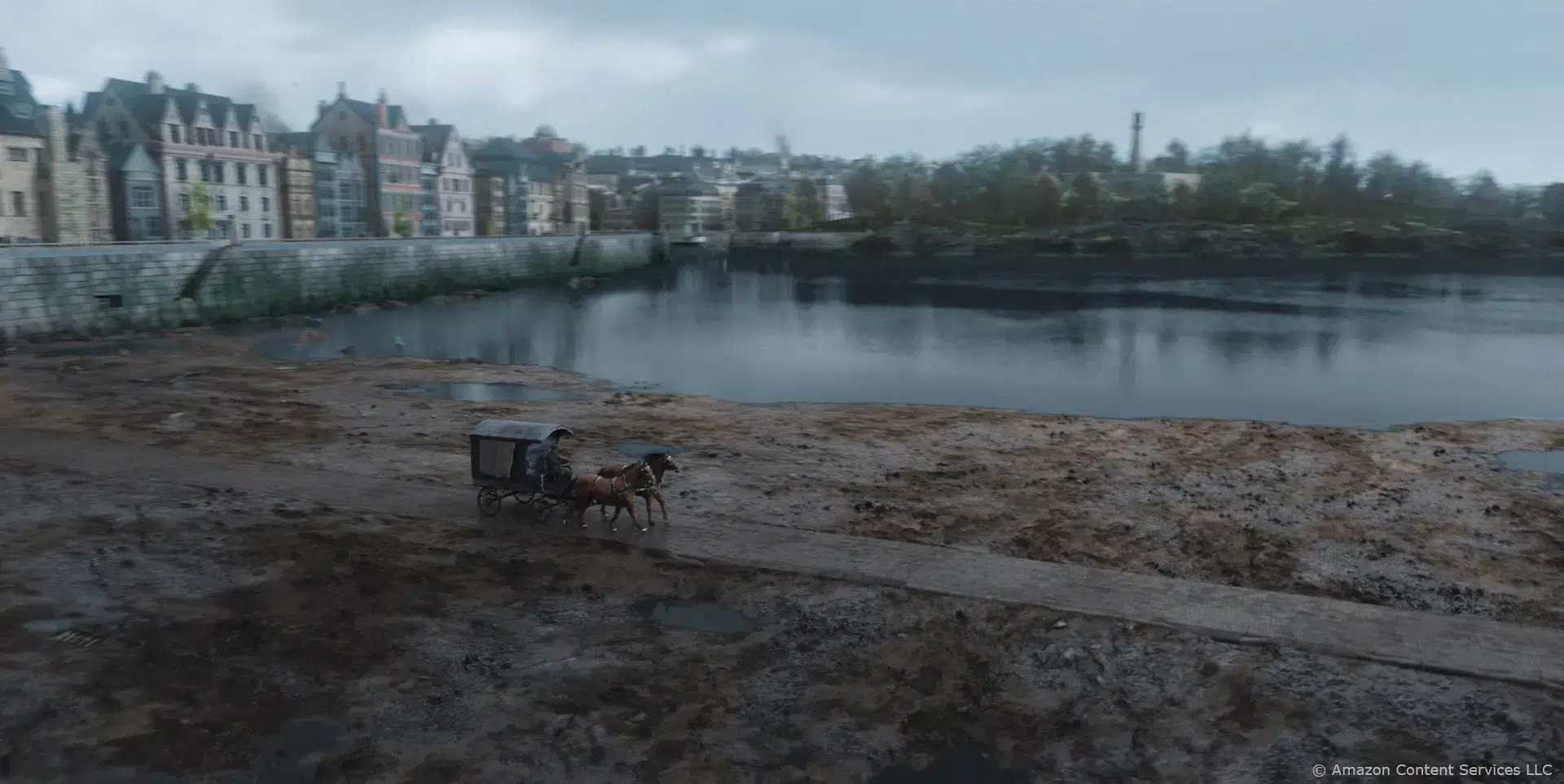
What is your favorite shot or sequence?
Sparas’ killing spree… no doubt, but with the Train Heist sequence a close second.
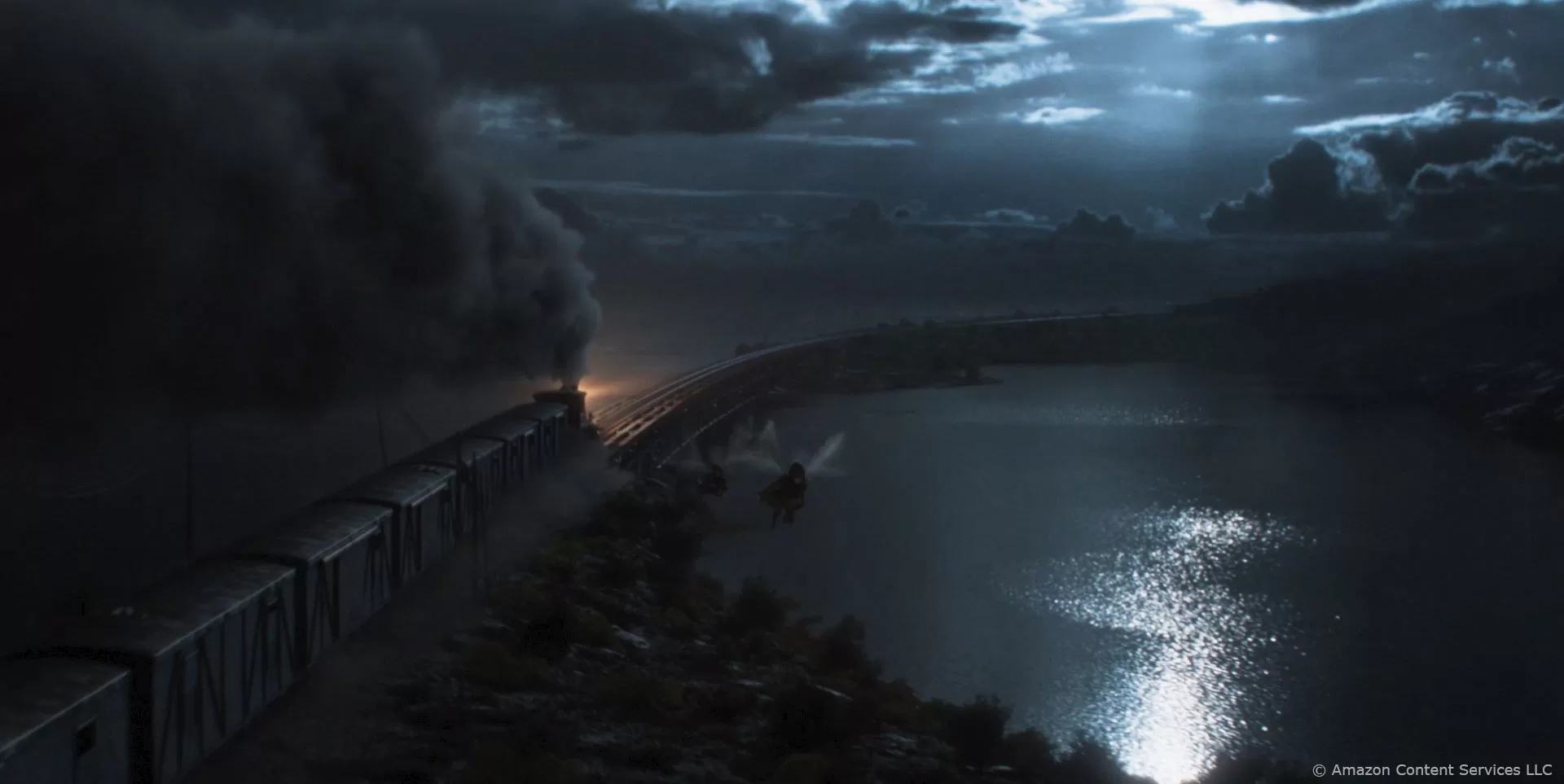
What is your best memory on this show?
I was thrilled to have the opportunity to work on the show, having watched and loved Season 1 for its magical steampunk atmosphere. It’s a great memory knowing that the clients were pleased with our work. What I enjoyed the most, however, was the collaboration with my team and clients. These projects can be immense at times, and success can only be achieved if we all pull together. Although I act as the Flight Director, without the contributions of everyone else on the team, nothing would have been possible. You build strong bonds with the people who are with you through thick and thin in high-intensity situations like this. Additionally, I had the chance to work with artists and production personnel I had never worked with before, and I made new friends. Our clients were also cooperative, allowing us to improvise and come up with ideas, which is always thrilling. I just wished we could’ve worked on the second half of the season, but we were unable to due to the delays caused by the pandemic.
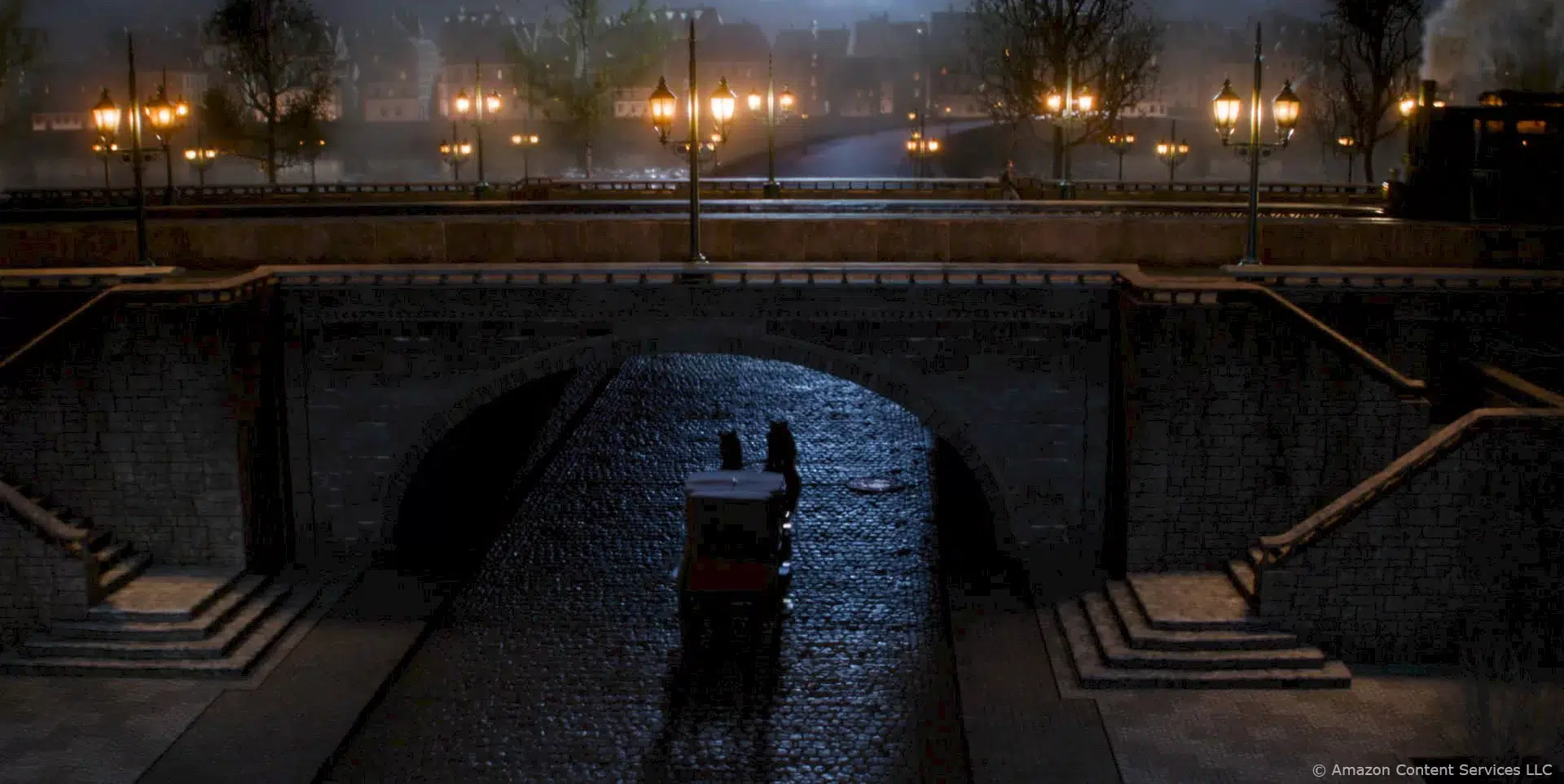
How long have you worked on this show?
I think from start to finish it was a bit over a year, from January 2020 to February 2021.
What’s the VFX shots count?
We worked on approximately 230 shots, but due to pandemic-related delays and rewrites, only around 175 shots that we worked on actually made it to air. There were whole sequences we put an incredible amount of work into but will forever remain secret, which is a huge bummer since no one will get to see it!
What was the size of your team?
All told, it was about 90 people.
What is your next project?
Interestingly, due to Covid-related delays, I have worked on two shows since finishing Carnival Row. I worked on the first season of « Ms. Marvel » and have recently completed « Citadel » for Amazon and the Russo Brothers.
A big thanks for your time.
WANT TO KNOW MORE?
Digital Domain: Dedicated page about Carnival Row: Season 2 on Digital Domain website.
© Vincent Frei – The Art of VFX – 2023






